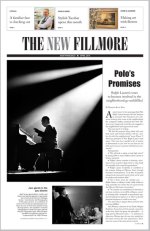A rare Franciscan manzanita long thought to be extinct was transplanted to a protected location in the Presidio this week after it was discovered along the Doyle Drive rebuilding project by a biologist who happened to be driving by.
“It’s an incredible find, like Christmas morning when you’re five,” says Mark Frey, an ecologist with the Presidio Trust. “For decades everyone has thought this plant was gone and the chance of finding it again was virtually non-existent. As part of our restoration efforts we scour that area all the time and yet there it was, right in the middle of the corridor.”
The Franciscan manzanita was last seen in the city for which it was named in 1942, at the Laurel Hill cemetery, near what is now the USF campus. But for a limited number of plants growing in botanical gardens, the species was believed to have been lost to the wild when the cemetery was bulldozed to make way for commercial and residential development.
VIDEO: Watch the relocation
Filed under: Home & Garden | Leave a comment »











